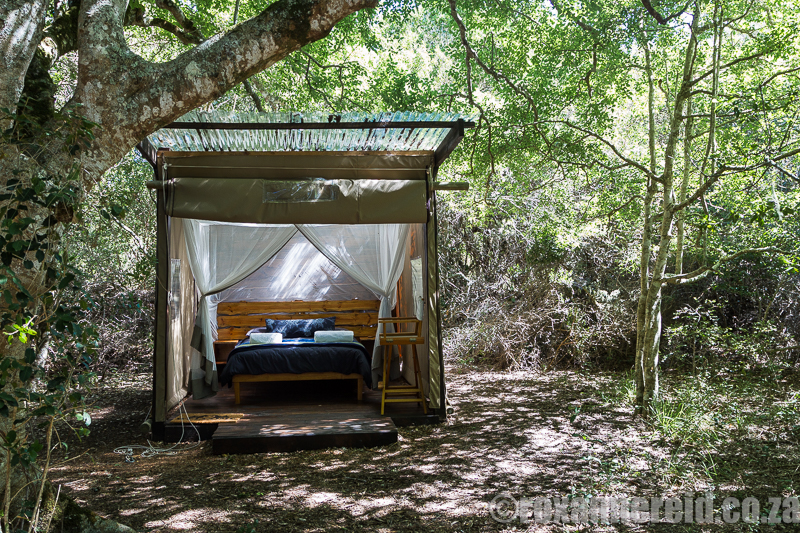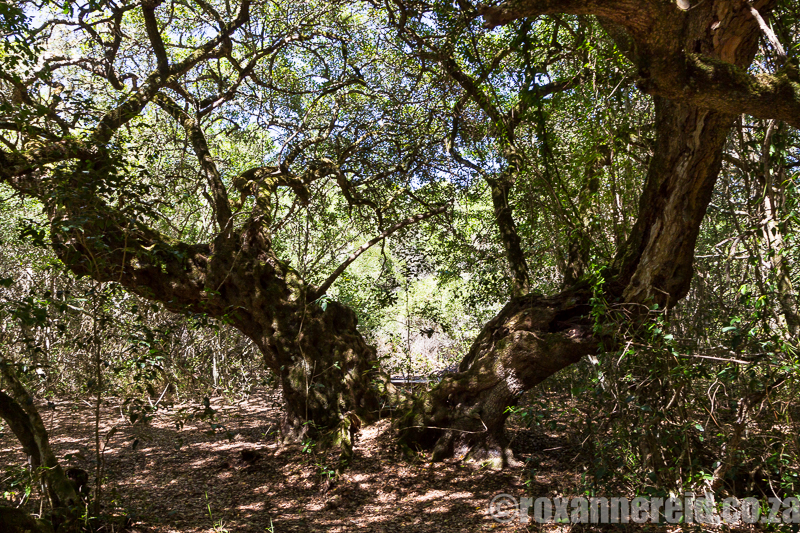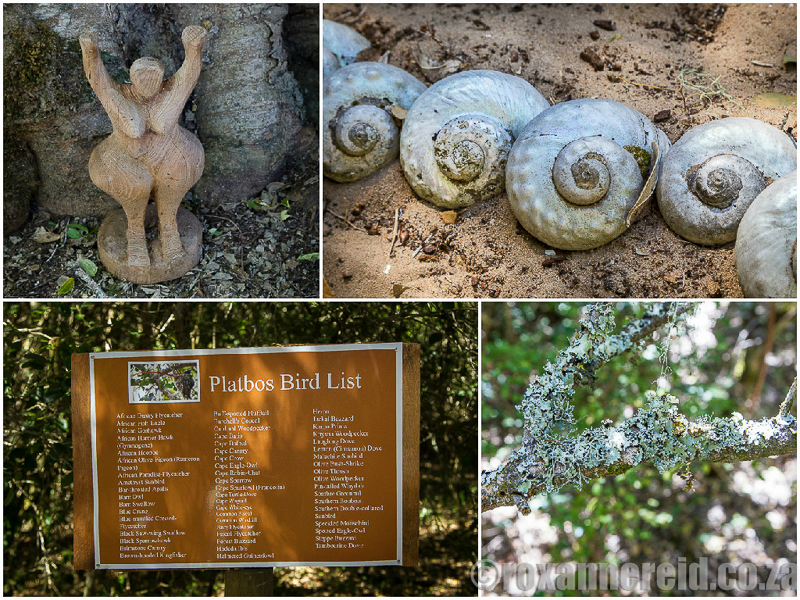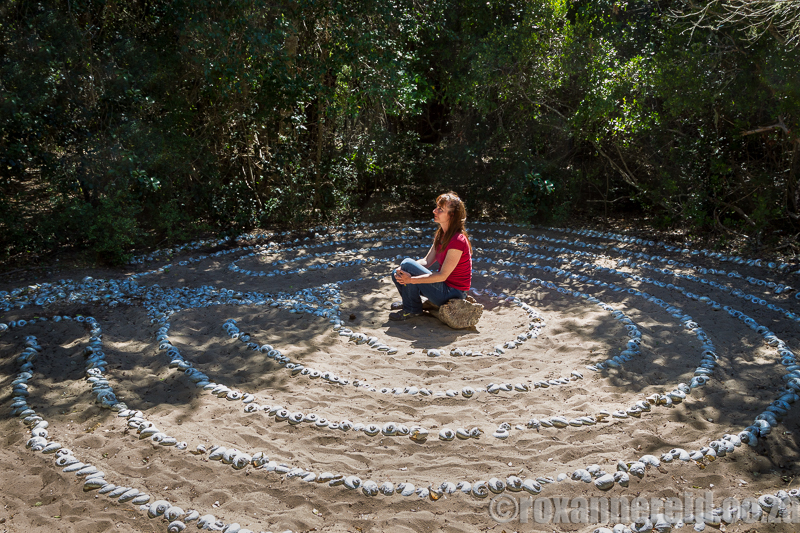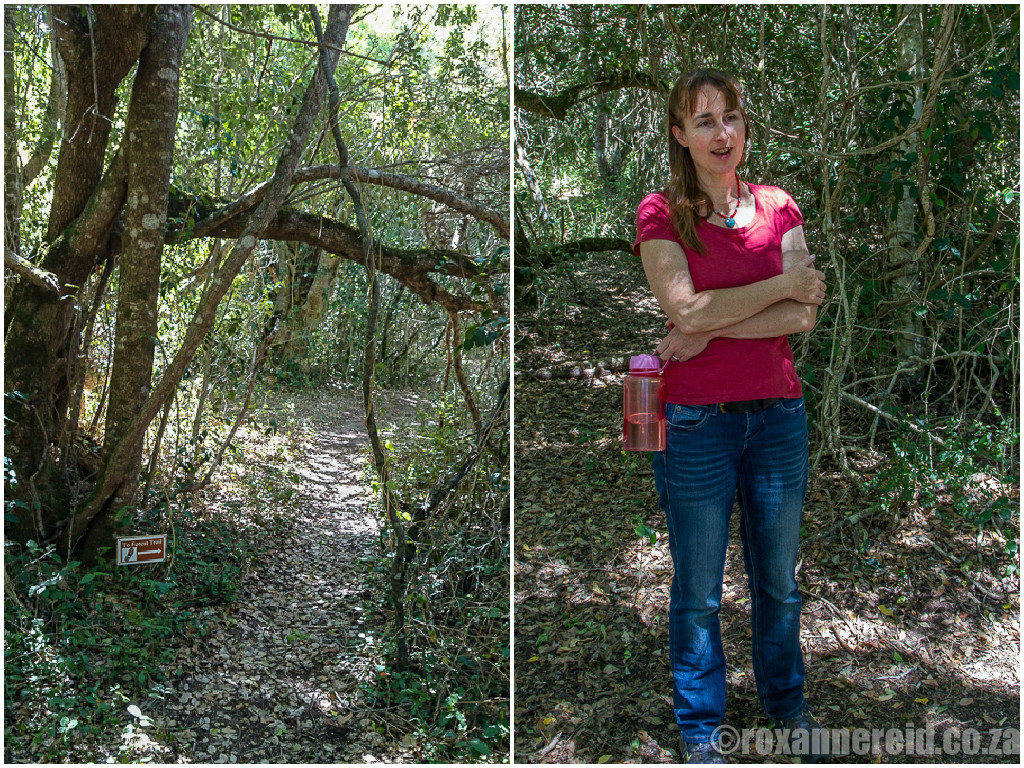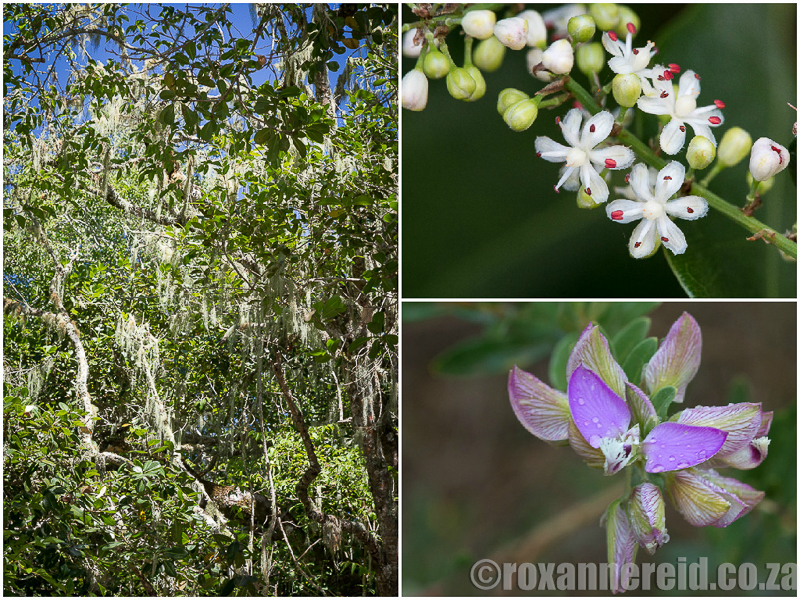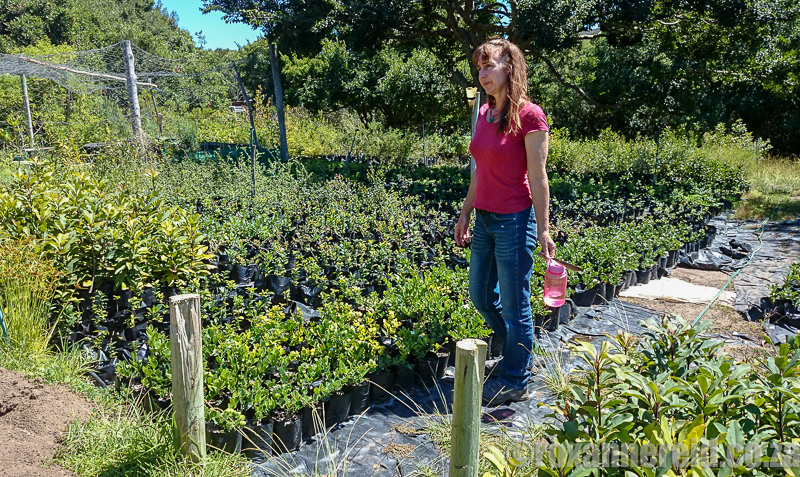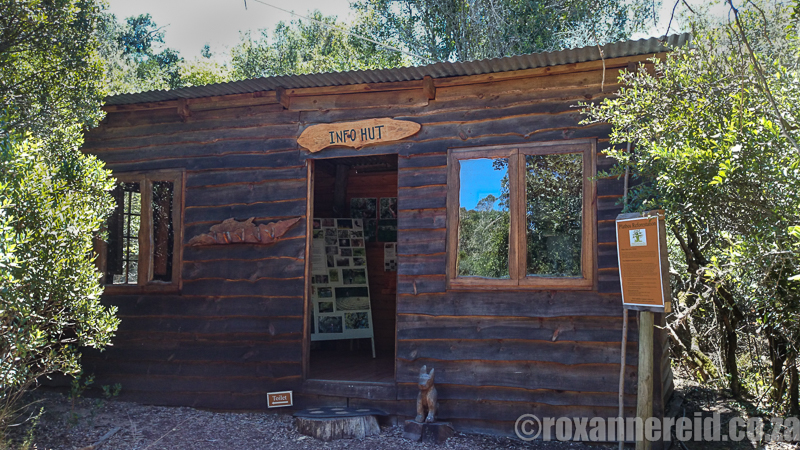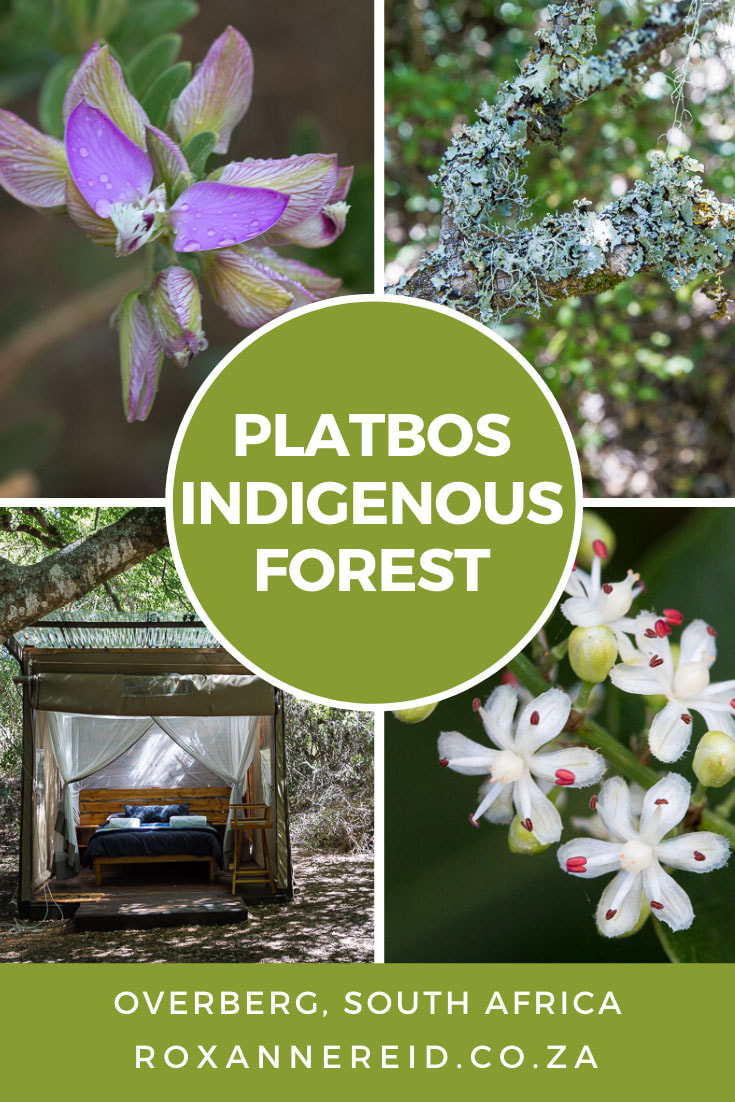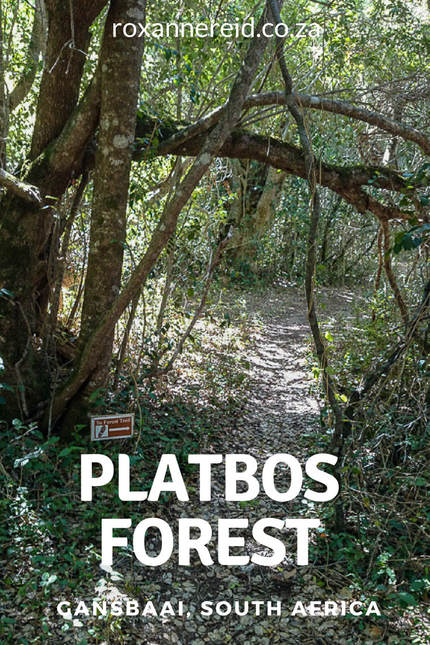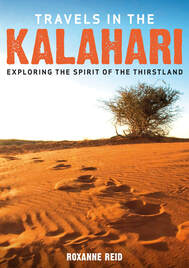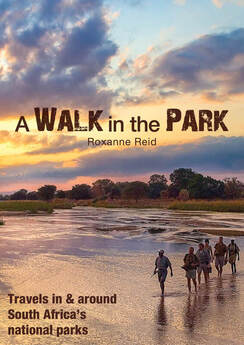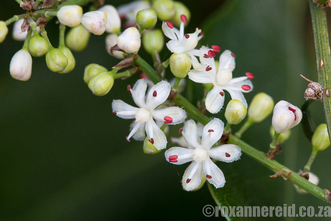
Gansbaai and De Kelders, about 45km southwest of Hermanus on the southern Cape coast, are just a two- or three-hour drive east of Cape Town. You might think this area is all about the ocean, whale watching and great white sharks, but you’d be wrong. It’s also where you’ll find the captivating Platbos indigenous forest in the Overberg.
We stayed over at Platbos’s enchanting Honey Bee Camp, but I’ll tell you more about that in another post. The next morning we went for a forest walk with soft-spoken horticulturist Melissa Krige, whose passion for this patch of forest shone from her face.
Only 0.56% of South Africa is indigenous forest and Melissa explained that Platbos’s survival is a mystery. ‘Usually, forests survive temperature increases over time by retreating into kloofs and ravines where it’s shady and moist,’ she said. ‘But Platbos is on gently undulating land with sandy alkaline soil, low rainfall, and no river for moisture. Despite this, the trees have survived, some of them for more than 1000 years.’ Occasional early morning coastal mists in the hot summer months help to sustain the forest’s moisture levels.
Other animals that call the forest home include bushbuck, caracal, porcupine, honey badger and genet, as well as leopard toad, tree frog and parrot-beaked tortoise. Birdsong is a constant background chatter, with barn owl, paradise flycatcher, bar-throated apalis, Cape batis, olive thrush and cardinal woodpecker being just a few of those you might hear or see.
I don’t know about all that; I just know that I was happy to be there, listening to the birds, feeling the cooling breeze, watching the dappled sunlight skip through the leaves.
- You can walk in the forest even if you’re not staying at Platbos. Book ahead on 082-4110448 (Mon-Fri, office hours). Get a map from the info kiosk and pay R50 an adult, R20 a child into the honesty box.
- How to get there: take the R43 from Stanford to Gansbaai. About 12km from Stanford take the left turn towards Grootbos. 6km further on this gravel road you’ll come to the Platbos turnoff on your right.
- Find out more about the Greenpop/Platbos Reforest Fest each May and buy your tickets to camp in Africa’s most southerly forest, plant thousands of trees and dance to live music.
- Give the gift of growth – sponsor a tree as a gift.
Like it? Pin this image!
